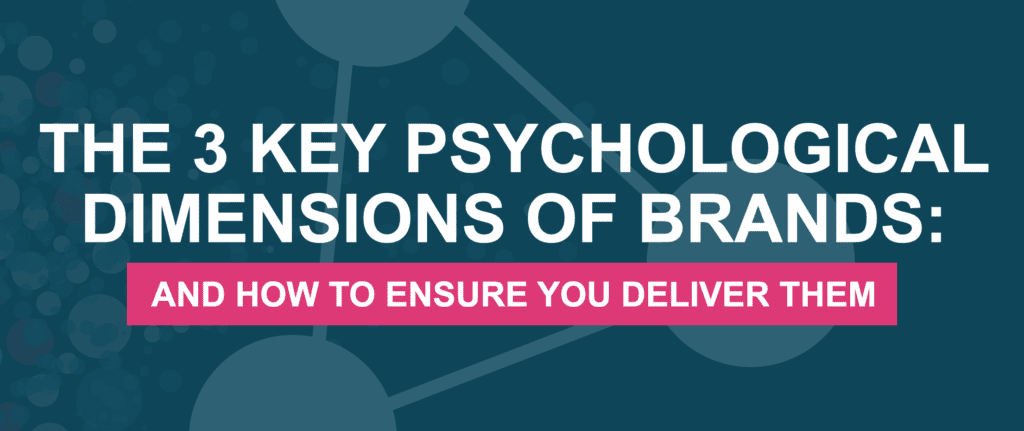
Most businesses spend a lot of time talking and thinking about their ‘brand’. But that word has more layers than a telecom provider’s phone menu and, often, it means different things to different people in many organisations.
From a consumer psychology perspective, I believe brands work in three dimensions. These have implications not just for how you market yours, but also for how you develop it and evaluate its performance.
The 3 Key Psychological Dimensions
1. An associative trigger
The brain works by association. Seeing a brand name or logo triggers the implicit associations that have been created by what is around that brand’s identity when a consumer encounters it. Marketing elements, like advertising and packaging, are a natural focus for association building. But, in some contexts, service experiences have a more enduring impact on which associations exist (if you don’t believe me, try creating influential advertising for a rail franchise that has overcrowded, late-running trains!).
2. An attention attractor
In a crowded and ever-more fragmented consumer landscape, we avoid being overwhelmed because of our highly evolved capacity to filter out things that aren’t interesting. This unconscious filtering is far from fool proof (something the people who make airline safety briefings constantly battle with), but it enables us to function. So a brand logo becomes an important marker for quickly identifying if something is or isn’t worth focusing our energy-sapping conscious attention on.
3. A means of establishing unconscious familiarity or reducing risk
Studies show that, when people have been exposed to a brand, even outside of conscious awareness, they like it more when they are asked to evaluate it (perhaps because unconscious associations have started to form and it feels safer as a result). So branding can create distinctiveness that helps increase the favourability for something new. A new product launched under an established brand name can draw on the parent brand associations, which confers a sense of reassurance to a consumer that an unknown brand won’t have.
But how do you deliver these?…
Implications
1. The need for clarity about which associations matter
If you asked ten people in different parts of your organisation what associations consumers have with your brand, how consistent would the answers be? It’s hard to build strong brand associations if the organisation hasn’t formed a clear view on which it should be pursuing. And it’s likely to be counterproductive if internal teams are doing their work with different associations in mind (consciously or unconsciously).
2. The need for consistency
The consumer landscape is fragmented and many people in it make fruit flies look purposeful. To embed positive associations, consumers need to encounter them regularly. It can often be hard for people within an organisation to appreciate how little and how slowly consumers build associations from a brand’s activity; where the brand owners are focused on something for hours and hours each week, it is just one of a multitude of bits of decaying organic material for those fruit flies.
3. Congruence
With most consumers interacting with brands across a variety of touch points, it’s important that the desired brand associations are manifested at each one. This doesn’t necessarily mean executing in exactly the same way; different contexts are likely to require different approaches. For example, what counts as friendly in a store is different from what constitutes friendliness online. Ultimately, what matters is that no aspect of the brand experience is incongruent with the desired associations.
4. Evaluation
The important factor to keep in mind is that the brand-association interaction is largely taking place at an unconscious level. So, to state the obvious, if the research techniques you use focus on respondents’ conscious perspectives (as most do) you won’t have an accurate gauge of your success.
Whether it’s helping clients with consumer insight around brand development, advertising, innovation, packaging, events or customer experience, we believe we can provide the deepest and most practical insights by bringing a clear perspective on how brands unconsciously influence consumer behaviour.